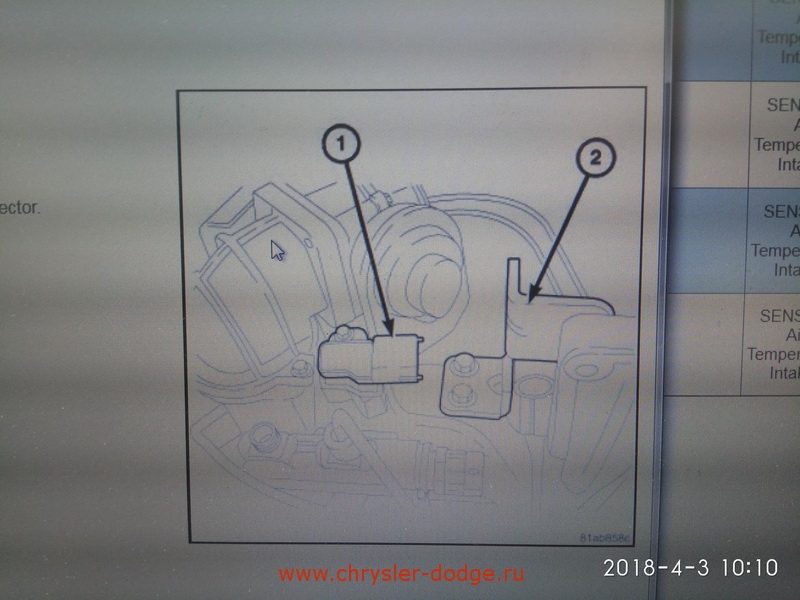
P009A Correlation between intake air temperature and ambient temperature
Content
- P009A Correlation between intake air temperature and ambient temperature
- OBD-II DTC Datasheet
- What does this mean?
- What is the severity of this DTC?
- What are some of the symptoms of the code?
- What are some of the common causes for the code?
- What are some steps to troubleshoot the P009A?
- Related DTC discussions
- Need more help with the P009A code?
P009A Correlation between intake air temperature and ambient temperature
OBD-II DTC Datasheet
Correlation between intake air temperature and ambient air temperature
What does this mean?
This Generic Powertrain Diagnostic Trouble Code (DTC) is commonly applied to many OBD-II vehicles. This may include, but is not limited to, Mercedes-Benz, Jeep, Mazda, Ford, etc.
If you have a P009A code shortly after engine service, it means that the powertrain control module (PCM) has detected a mismatch in the correlated signals between the IAT sensor and the ambient air temperature sensor. It is necessary to compare the temperature of the IAT and the ambient air to ensure that no obstructions are blocking the flow of vital air to the engine intake.
IAT sensors usually consist of a thermistor that protrudes from a plastic housing on a two-wire base. The sensor is inserted into the air intake or air filter housing. The secondary IAT sensor design integrates the sensor inside the mass air flow (MAF) sensor housing. Sometimes the IAT resistor is located in parallel with the MAF energized wire, and in other cases it is located in a recess away from the airflow. Check the IAT sensor location specifications for the vehicle in question before making any assumptions.
The thermistor is usually installed so that the intake air flows through it. The sensor body is usually designed to be inserted into the attachment point through a thick rubber grommet. As the intake air temperature rises, the resistance level in the IAT decreases; causing the circuit voltage to approach the reference maximum. When the air is colder, the resistance of the IAT sensor increases. This causes the IAT sensor circuit voltage to drop. The PCM sees these changes in IAT sensor signal voltage as changes in intake air temperature.
An ambient air temperature sensor acts in much the same way as an IAT sensor. The ambient temperature sensor is usually located near the grill area.
A P009A code will be stored and a malfunction indicator lamp (MIL) may illuminate if the PCM detects voltage signals from the IAT sensor and ambient temperature sensor that differ by more than the maximum allowable value for a specified period of time. Some vehicles may require multiple ignition failures to illuminate the MIL.
What is the severity of this DTC?
The IAT sensor input is vital to fuel delivery and a stored P009A code should be classified as serious.
What are some of the symptoms of the code?
Symptoms of a P009A engine code may include:
- This code may show no symptoms
- Engine control problems
- Decreased fuel efficiency
What are some of the common causes for the code?
Reasons for this engine code may include:
- IAT sensor left disconnected after service
- Defective ambient temperature sensor
- Defective IAT sensor
- Open or short circuit in circuits or connectors
- Faulty PCM or PCM programming error
What are some steps to troubleshoot the P009A?
Before diagnosing the P009A, I need an infrared thermometer with a laser pointer, a diagnostic scanner, a digital volt / ohmmeter (DVOM), and a reliable vehicle information source.
The stored IAT sensor code prompted me to check the air filter element. It should be relatively clean and properly inserted into the case. A visual inspection of the IAT sensor and ambient temperature sensor wiring and connectors should be performed if the air filter element appears to be functioning properly.
Then I connected the scanner to the car diagnostic port and got all stored codes and freeze frame data. I usually like to write this information down. This can be helpful as the diagnostic process develops. Now I would clear the codes and test drive the vehicle to see if the P009A is reset. My source for vehicle information should include wiring diagrams, connector pinouts, component test specifications, and connector types for the vehicle in question. This information will be critical when testing individual circuits and sensors. Remember to turn off the PCM (and all associated controllers) to prevent damage to the controller when testing individual system circuits for resistance and continuity with the DVOM.
Testing IAT and Ambient Temperature Sensors
- Use DVOM and your source of reliable vehicle information.
- Place DVOM on the Ohm setting
- Disconnect the sensor under test.
- Follow Component Testing Specification
Sensors that do not meet the test requirements should be considered defective.
Check reference voltage and ground
- Check the reference circuit of the individual IAT and ambient temperature sensor connectors using the positive test lead from the DVOM.
- Check ground terminal with negative test lead.
- With the key on and the engine off (KOEO), check the reference voltage (typically 5V) and ground at the individual sensor connectors.
Check IAT and Ambient Temperature Sensor Signal Circuits
- Connect the sensor
- Test the signal circuit of each sensor with the positive test lead from the DVOM.
- The negative test lead must be connected to a known good motor ground when testing the signal circuit.
- Use an infrared thermometer to check the actual IAT and ambient temperature.
- Watch the scanner data flow and see what IAT and ambient temperature values are entered into the PCM or ...
- Use the temperature and voltage chart (found in the vehicle information source) to determine if each sensor is working properly.
- This is done by comparing the actual voltage of the sensor signal circuit (displayed on the DVOM) with the desired voltage.
- If any of the sensors are not displaying the correct voltage level (based on the actual IAT and ambient temperature), suspect that this is a bad thing.
If the signal circuits of the IAT and ambient temperature sensor reflect the corresponding voltage value
- Check the signal circuit (for the sensor in question) at the PCM connector using the DVOM.
- If there is a matching sensor signal on the sensor connector that is not on the PCM connector, suspect there is an open circuit between the two.
Exhaust all other options and suspect a PCM failure (or PCM programming error) only if all IAT and ambient temperature sensors and circuits are within specifications.
Technical Service Bulletins (TSBs), which store vehicle data, symptoms, and codes, are most likely to help you diagnose.
Related DTC discussions
- There are currently no related topics in our forums. Post a new topic on the forum now.
Need more help with the P009A code?
If you still need help regarding DTC P009A, post a question in the comments below this article.
NOTE. This information is provided for informational purposes only. It is not intended to be used as a repair recommendation and we are not responsible for any action you take on any vehicle. All information on this site is protected by copyright.

